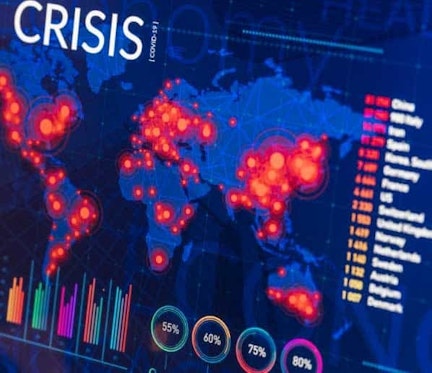

Simplicity of language
It’s startling to compare New Zealand’s Prime Minister Jacinda Ardern with the UK’s Boris Johnson. She uses simple language and clipped sentences, words that everyone would use in normal conversation, gradually explaining things point by point. Johnson’s style is more in keeping with the rousing performances he likes to make when in public, with often complex speechmaking designed to lift sentiment rather than placate fears. What became clear from both examples is that you need to simplify the complex and if you don’t get the message right first time – speaking the language of the audience you most want to reach – it will be a struggle to get them back.

Policy first, then slogans
Good slogans tend to communicate one core purpose. The UK government’s first one – Stay Home, Protect The NHS, Save Lives - did just that. If we stay at home, fewer people will die. It continues to resonate. In Australia, the ‘whole government’ approach was equally effective.

Balance empathy with gravity
Good tone can conquer fear. People respond to leadership that is reassuring and, where possible, is underpinned by kindness. That’s what empathy is – a key ingredient missing from a lot of global communications. It’s a tone that’s comforting, supportive, talks of doing things together and points to future positivity. Messaging that is authoritarian or punitive in tone, or which is socially divisive or invokes fear, will have the opposite effect. Witness Donald Trump. The more you tell people not to do something, the more likely they are to think of doing it. Instead, tell them what they can do, providing examples of adherence rather than non-adherence.

Nuanced audiences
Clear, positive messaging which is segmented by age, culture, and geography is key. One size does not fit all, which means messaging needs to be nuanced. What works for a capital city may seem irrelevant for those far away from the homes of politics. Which is why, gradually, more local leaders have come to the fore especially in Europe and America. In addition, leaders need to appeal to different audiences and craft their messaging accordingly. Again, New Zealand’s Jacinda Ahern has led the way here. Ubiquitous throughout lockdown, she’s supplemented her briefings with radio, TV and social media appearances – and always presenting different personas. On Facebook, for instance, she has engaged citizens with a relaxed and reassuring image, at odds with her news briefings. It’s something Boris Johnson did very early in the crisis but then abandoned the mid-morning TV sofa for more serious political messaging.

Informative graphics
Complicated formulas are too scientific, whilst colour-coded bar charts that resemble spice-flavourings in a fast food restaurant are too dumbed down. If you want to enable people to cope with change, then it’s important to use such devices to create a framework that allows people to make sense of what is happening and why. In New Zealand, for instance, a four-level alert framework was released and explained 48 hours before lockdown was announced with simple graphics to explain why it was needed and how it would work. In other countries, such graphic-led frameworks came far too late, by which time confusion meant the messaging would be less effective. On a more positive note, the UK’s utilitarian yellow and white stripe design – akin to a road accident – has been highly effective and eye-catching. In Australia a three-step plan for easing of restrictions, called a Roadmap to a COVIDSafe Australia (COVIDSafe being the name of the contact tracing app) has reassured Australians about how to ease back out into society again. Most don’t know the detail, but feel confident as they can see a plan.

Focus on clarity
When people are worried, they want to be told what they should do. Say it simply, say it often and say it loudly. When Boris Johnson announced the ‘first sketch of a roadmap’ in his recent Sunday night broadcast, the immediate effect was to feel there was no plan. Britons wanted a roadmap and all they got was a sketch of what something might look like if certain possibilities came to be. That’s not clarity but a recipe for confusion. Sometimes it’s not about what is said but what is consumed and how it is consumed. Information needs to be clear, specific and consistent, focused on how behaviours can protect individuals. Concrete examples of what might happen are better than vague guidance on what might happen. The Australian roadmap to a COVIDSafe Australia outlined three steps with clear identification of what was being asked of Australians at each step and what would be permissible in order to stay safe while getting the economy started. Equally, New York Governor Andrew Cuomo’s recent, very catchy slogan – Do Your Part, Show Respect, Wear Your Mask – felt clear and direct. Perhaps in the wrong order though – swap the first and third parts of this and you have something even easier to grasp. Always lead with the action.

Two-way frequency
Aside from sloganeering, the frequency of fact-giving has been vital throughout the health crisis. Giving people clear information, reassurance and providing them with actions that they themselves can take as a result of the communication have been highly effective. At daily press conferences, the two-way dialogue between politicians and health experts, towards either journalists or members of the public have added to that sense of transparency. Pre-recorded messages that give instructions are useful in a political campaign but, in a crisis, you need to inspire involvement by talking about direction. Suppressing questions simply causes even more panic.

Learn from mistakes
There are bound to be setbacks so when they happen admit them, explain them and learn from them. In a situation like this current epidemic, no one expects every decision and action to be perfect – admitting mis-steps is more convincing in terms of public relations than somehow hiding or avoiding acknowledgement of them. Equally, if things are bad, explain them don’t cover them up.

We not me
Emphasising a ‘stand together’ principle – in which collaboration, community pride, a responsibility to care for each other which stems from a sense of civic duty – are far more effective than messages about looking after oneself. Self-interest has given way to community spirit and a strengthened social identity during this pandemic. It is we rather than you. Persuading the collective to take responsibility for collective problems has been a universal success story. In Australia, the Prime Minister Scott Morrison leveraged Australian’s underlying optimism ‘She’ll be right, mate’ to unite the community to work together and avoid a health crisis by staying home.

Set out a plan and review it regularly
A concrete plan – tailored for different platforms - maintains behaviour change by helping people to anticipate possible barriers and enablers to adherence, and address these in advance. It is fine to announce measures but people need to know precisely what this means for their individual circumstances, enabling them to prepare and plan when to act. Vagueness makes planning difficult, as does too much rigidity. Real effectiveness lies in being nimble enough to adjust the plan when the need arises, as has happened in Asian countries dealing with second outbreaks following the easing of lockdown. In Australia, too, such agility has been highly effective. Weekly qualitative and quantitative programmes have been specifically focussed on how Australians are faring in the pandemic, including both message testing and campaign evaluation targeting different segments – from families juggling working from home and schooling their children to mental health challenges from isolation and loneliness and job loss or underemployment among those in their 20s, messaging has targeted different cohorts who face different challenges during the pandemic. The overarching goal being to unite Australians to adhere to restrictions, which to date, has avoided a health crisis.

Control the message
So, work as ‘one government’ as has been the case in Australia and New Zealand. In Australia specifically, the community was seeking a one-message, unified Government. The Federal Government announced the forming of a national cabinet to bring together all leaders to make decisions both nationally and by state. This was the first time since the last world war that such a cabinet had been formed. Australians endorsed the bipartisan approach and as the situation unfolded, appreciated that each State needed to act differently to address issues relevant to the region. Immediately after each cabinet meeting, the PM and the CMO addressed the nation, followed by each State Premier addressing the media.

Evidence-based honesty
Be honest and open. Which is why it’s important to make the data that informs decision-making clear to the public, explaining trends that inform thinking. However, data on its own doesn’t always convince. Alongside it, use real human stories, frame actions being taken by highlighting the work of individuals. In Australia, the nation rallied behind the motivation of flattening the curve. This narrative was supported by daily announcements of new infections and the flattening time period needed for the nation to come together.

Better timing
Factual updates help to clarify the situation but that requires good timing too. It’s unusual for press conferences to be held in the afternoon in the way the English (not Scottish or Welsh) government has done. Morning sessions help to keep control of the emerging narrative throughout the day and set the tone of debate, rather than fuel speculation about what is going to be announced at the end of the day in what feels like an anti-climactic presentation. Timing delays between what is said and published can also lead to confusion. When Boris Johnson announced at 7pm on a Sunday what the next phase of lockdown would be, no one had access to the accompanying documents for a further 18 hours, which merely sowed seeds of doubt, confusion and mistrust.

Plan for feedback
In a crisis, it’s not about being liked but being trusted – so every word of a leader counts. Which is why thinking of the potential questions people will ask to the decisions you’ve made – and then collating suitable answers – is as vital as the decisions themselves. Strategy is about planning for the aftermath of decisions and making sure everyone is reading from the same script. UK politicians have often struggled to answer even the simplest of questions because they feared contradicting themselves and others.

Incentivise with rewards
People want to know that their sacrifice will lead to benefits. Messaging is more persuasive when it isn’t accompanied by punishment. Opening up access to green spaces, offering entertainment, providing support for the most vulnerable, cultural nourishment and education, and restoring some kind of work-based normality, reducing physical barriers to social distancing will increase adherence and reduce distrust and distress. Australia used a combination of rewards and punitive measures – mobilising around flattening the curve and positive messages and penalties and fines issued for non-compliance to social distancing and gatherings.

Use insight to guide strategy
Ideally, virtual focus groups with a broad ethnic background, age mix and socially diverse audience should help test messaging, bolstered by polling and quantitative and qualitative research data. Particularly in conjunction with assessing behavioural changes and emotional drivers. In Australia, active measurement of effectiveness has meant that messaging has been tweaked and different creatives used to dial up/down messaging, especially for different cohorts in response to how it’s been tracking.

Avoid too many cooks
Good messaging is a mix of art and science, emotion and reason. It also feels real and instinctive. Sometimes, messaging can become less powerful the more it has been rewritten by a team of writers. Crisp prose and clear signalling is often the work of fewer people willing to point out errors. A committee of sycophants will never find fault – and there are always faults. The nuance that makes a message effective is almost always lost when it is written, edited, and re-edited by committee. Too many people, with too many perspectives usually mean that good communication gets replaced with over-engineered, jargon-filled messaging.

React fast to misinformation
This is the first pandemic of its kind in the age of social media. Because of the saturated information environment, many authorities have found themselves overwhelmed and citizens have struggled to understand, consume and recall the tide of information that is flooding them. And when that information dispensed through the internet does not have to follow strict guidelines for facts and proof, the challenge for effective communication becomes even more complex. Speculation has been rampant and not all of it has been based upon serious factual analysis. On top of which, disinformation has been growing, leading citizens to become more cynical with and less trusting of their leaders. Rebuttals need to be fast and firm.
Initially as the pandemic broke in Australia, citizens turned to the media and actively searched for information to try and understand what may happen. As fear grew, Australians narrowed their media consumption to more factual, authoritative voices and filtered out the more sensationalist and fearful stories. Australians tuned in for the almost daily address by the PM and the Government information was rated as the right amount. Trust in the Australian Government grew and has been maintained throughout this crisis at incredibly high levels.

What we have seen throughout the Covid-19 pandemic is that successful communications are as much about strategy and sensitive testing, as they are about writing and semantics.
At a time of heightened sensitivity, what our leaders say and how those messages are consumed, interpreted and repeated by citizens can have profound effects on decision-making.
Which is why it is crucial to analyse and test the impact of these words, to make sure the understanding of them is optimised. Future outcomes depend on the way our politicians’ words are responded to, which requires proper planning and careful thought. Picking the right words is as much about research and insight, as it is writing and semantics.
We believe words matter and that it is critical to get these right, particularly during a crisis, when the success of a campaign depends on the adoption of new positive behaviours. Our work is helping our clients navigate this tricky territory, avoiding the pitfalls and creating truly effective campaigns that are critical for everyone.








